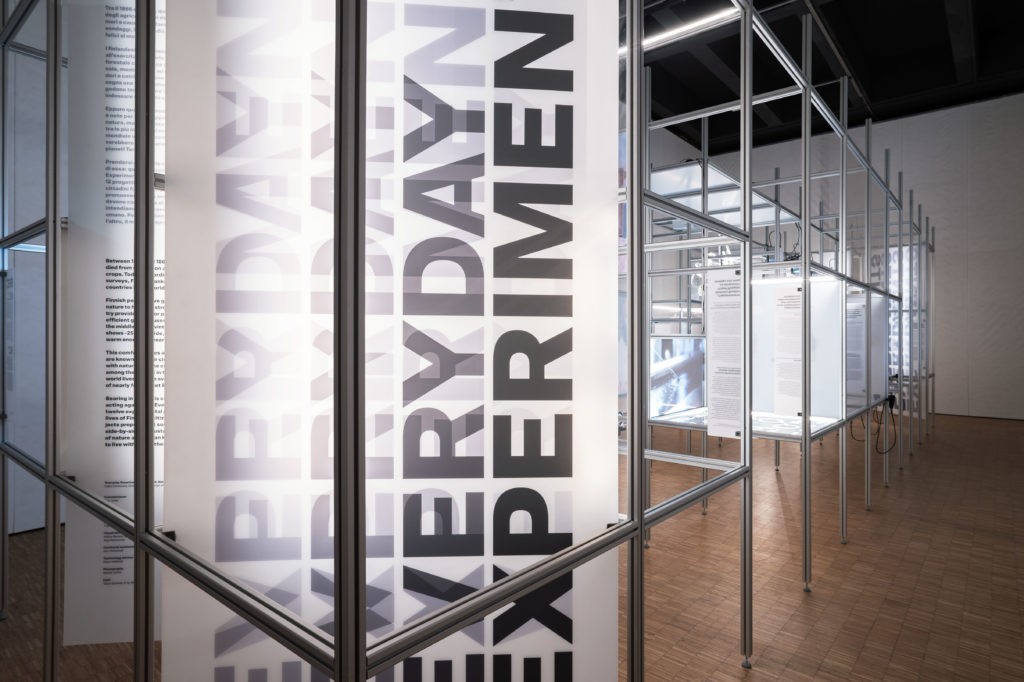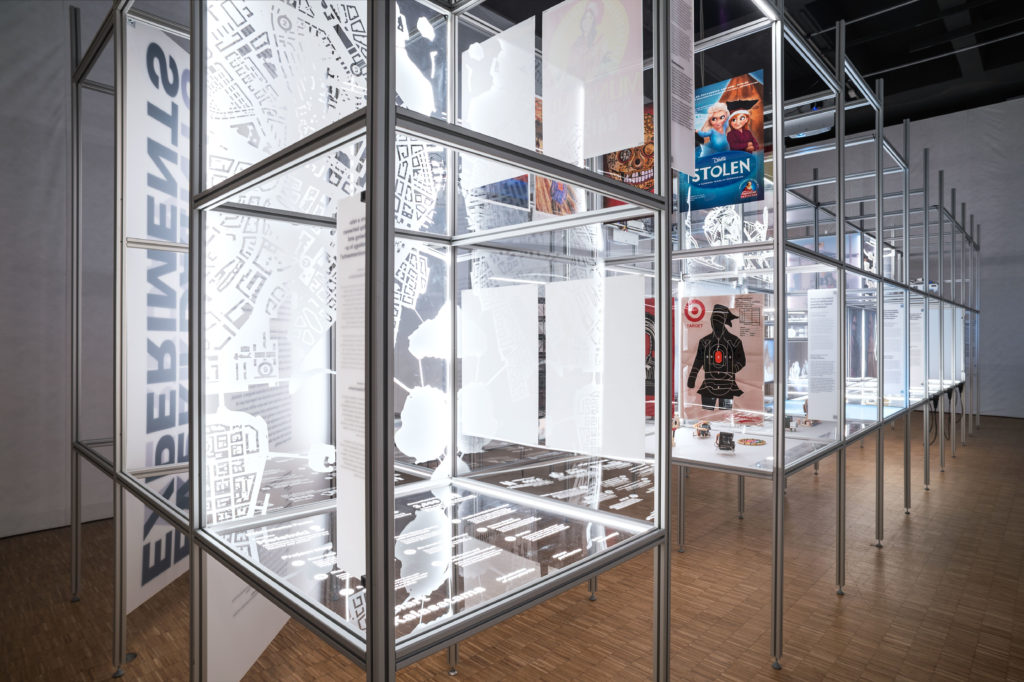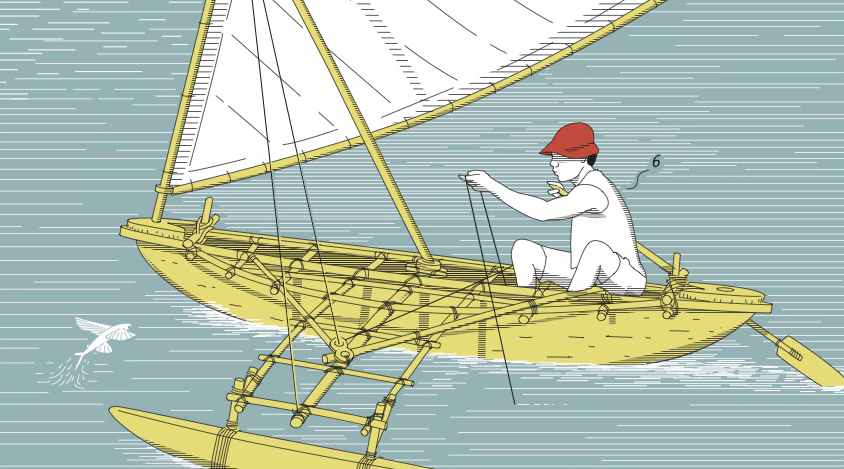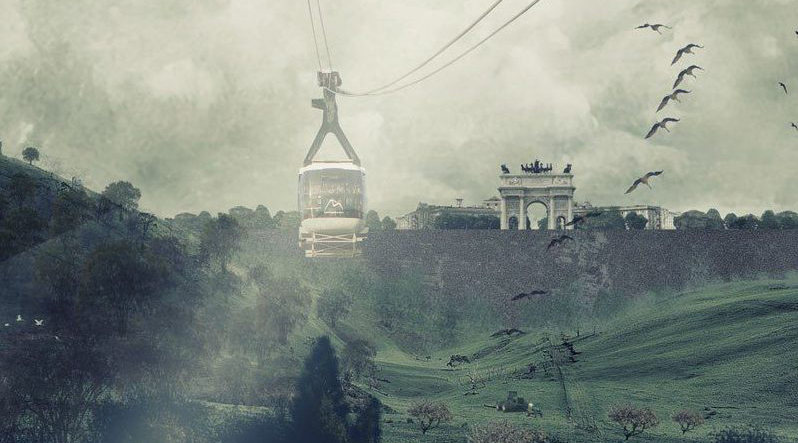EDITOR’S NOTE: The Finnish participation in the XXII Triennale di Milano, titled Everyday Experiments and curated by Kaisu Savola and Guy Julier, is devoted to various possible approaches to the theme of Broken Nature, each different in methodology and impact. The pavilion, which focuses on daily life issues and is inspired by Finland’s recent history, was commissioned by the Aalto University and supported by the Ministry of Education and Culture and the Ministry of Foreign Affairs of Finland.

Photo by Valentina Casalini. 2019
Curating contemporary design has become a minor growth industry in the past three decades. Following the foundation of London’s Design Museum in 1989, there are now over 40 design museums of various types across Europe. And, of course, the panorama of design has shifted radically over this period as well. No longer solely focused on industrially-produced objects, design curators are considering also design thinking, services and systems, internet-of-things, organizations, and even behaviors as the objects of exhibitions. The idea of individualized objects of manufacture held in glass cabinets can seem strangely anachronistic for design curation, these days. This conception perhaps belongs to a 20th century world where ‘good taste’ and the aesthetic qualities of design objects were foregrounded.
A central device of this earlier era has been the ‘white cube’ environment, drawing on the modernist tradition of art galleries. The exhibition environment had to be clean, bright and, above all, neutral in order to not distract from the purity of an abstract painting or an encounter with a conceptual art installation. There were challenges to this. For example, in 1957, London’s Institute of Contemporary Art staged This Is Tomorrow. This exhibition presented a cacophony of pop art, American comics, advertisements, and commercial products. This iconic event – put together by the Independent Group, a collective of artists, designers, architects, and critics – attempted to demonstrate the interplay of high and low cultural forms, making commentary on the cross-fertilization of ideas and aesthetics between them. It was thus about the overall experience and the relationship of objects within it rather than about showing discrete works of art in the white cube. Sixty years later, some design curators are again interested in telling stories and highlighting relationships through exhibitions. This demands a different approach to design, beyond showing it as ‘art.’
The Finnish exhibition at the XXII Triennale di Milano, Everyday Experiments, is indeed centered on telling stories rather than celebrating design objects. Its Chief Curator, Kaisu Savola, and I established very early through our research three guiding principles:
- that we wouldn’t show the outputs of individual designers but rather the multiple, day-to-day activities of organizations, communities, and companies, within which, however, design had several roles;
- that everything we exhibited would be unfinished and ongoing experiments, in that they would be in constant development, undertaken at scale and in public;
- that the twelve projects in the show would not make up a coherent whole in terms of their aims or politics and, indeed, may even be in contradiction with each other.
This is, in part, our response to the overall theme of the XXII Triennale, Broken Nature. Design cannot address questions of environment and equality alone. We have to pay attention to how it works with and in forms of collective action. And we have explain the full range and implications of this collective action.
So, why not do this through a book, a TV documentary, or a website?
First, an exhibition allows for a different kind of focused attention compared to the two-dimensional world of text and images. Visitors can literally move in and out of issue-spaces that an exhibition offers. They can stop and consider. They can engage in and out at their own pace.
Second, by combining different media – video, audio, photographs, artefacts, info-graphics, text – the multiple forms that make up experimental projects can be represented. It is the work of people and organizations but also of things that make up these projects. Third, the exhibition allows us to juxtapose different projects in a three-dimensional space in such a way as to reveal the contradictions and continuities between them. There are narratives within each project shown, but also multiple points of entry into the display as a whole.
The Everyday Experiments exhibition architecture, designed by Saara Kantele, Ville Kokkonen, Monica Romagnoli, and Tuomas Siitonen, therefore provides a modular superstructure into which the stories of each project are located. As a whole, its rectilinear, scaffold-like form provides a coherent construction that supports the different media at play within it. Meanwhile, graphic designers Adina Renner and Qin Yanghave opted for a clean typographic identity in keeping with the main structure. Visitors are then free to weave in and out of the exhibition architecture which provides intimate, quiet corners to engage with each project.
The quietness of Everyday Experiments is therefore meant to contrast with some contemporary conceptions of ‘innovation’ that breathlessly emphasize speed and noise. The attention-economy of design sometimes seems hellbent on delivering an endless spectacle of change. Instead, we want to show that experimentation is often slow-moving and intimate. It requires the dedicated time and labor of various parties, the negotiation of relationships, and working with and between things. The conceptual ambitions of the show are also tempered by several practical considerations: curating something that can technically withstand 6 months of exhibition; being able to efficiently ship a range of media objects and the exhibition structure from Finland to Italy; and designing and specifying an exhibition ‘at distance,’ far away from its final location.
Ultimately, the curation of Everyday Experiments is an attempt to explore how design can be shown in a way that also exhibits services, relationships, labour, conversations and actions. It is therefore anticipated that it contributes not only to how we think about experimentation, design, and society but also how we represent them.

Photo by Valentina Casalini. 2019



